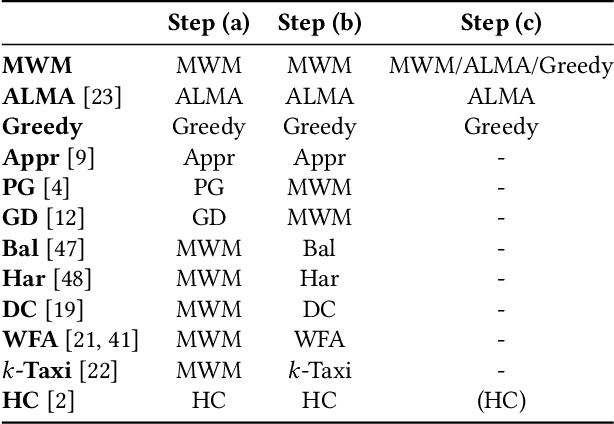Putting Ridesharing to the Test: Efficient and Scalable Solutions and the Power of Dynamic Vehicle Relocation
Paper and Code
Feb 12, 2020



We perform a systematic evaluation of a diverse set of algorithms for the ridesharing problem which is, to the best of our knowledge, one of the largest and most comprehensive to date. In particular, we evaluate 12 different algorithms over 12 metrics related to global efficiency, complexity, passenger, driver, and platform incentives. Our evaluation setting is specifically designed to resemble reality as closely as possible. We achieve this by (a) using actual data from the NYC's yellow taxi trip records, both for modeling customer requests, and taxis (b) following closely the pricing model employed by ridesharing platforms and (c) running our simulations to the scale of the actual problem faced by the ridesharing platforms. Our results provide a clear-cut recommendation to ridesharing platforms on which solutions can be employed in practice and demonstrate the large potential for efficiency gains. Moreover, we show that simple, lightweight relocation schemes -- which can be used as independent components to any ridesharing algorithm -- can significantly improve Quality of Service metrics by up to 50%. As a highlight of our findings, we identify a scalable, on-device heuristic that offers an efficient, end-to-end solution for the Dynamic Ridesharing and Fleet Relocation problem.
 Add to Chrome
Add to Chrome Add to Firefox
Add to Firefox Add to Edge
Add to Edge